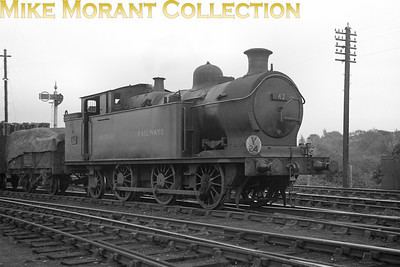 | ||
The Rhymney Railway was virtually a single stretch of main line, some fifty miles in length, by which the Rhymney Valley was connected to the docks at Cardiff in the county of Glamorgan, South Wales.
Contents
History
The aim of the railway was to gain access to the large iron works and collieries at the extreme north of the Valley. Short extensions, connecting with other railways, gave the Rhymney routes to take its (largely mineral) traffic to the Midlands and the North of England, or opened up connections to collieries and iron works. Some of those routes were worked jointly with other companies, particularly the London and North Western Railway (LNWR).
Growth of the railway
The original incorporation was in 1854, and the railway was opened in various sections as follows:
The Rhymney owned 120 locomotives in 1911. By then the total mileage of the Rhymney was over 61 miles; a further 16 miles of 'foreign' track was also worked over. Over two million tons of freight had been carried.
Details above taken from The Railway Year Book 1912 (The Railway Publishing Company Ltd)The first workshops for the railway were in Cardiff, opening in 1857 but, as their work increased, there was insufficient room for expansion, and Caerphilly railway works was opened in 1899.
Merging
Although the Rhymney was nominally independent until absorption in the Great Western Railway on 1 January 1922, the same managing director, in 1917, took over control of the line and the Taff Vale Railway and the Cardiff Railway, making them to all and intents and purposes one undertaking.
The route
The stations of the line from Cardiff to Rhymney were as follows:-
Main Line
Branch lines
From south to north these were:
All of those branches have since been closed.
Officers
Cornelius Lundie, from the outset of the line and for more than 40 years, was General Manager, Traffic Manager and Superintendent of the line. Upon his retirement in 1904, the Rhymney did a spring cleaning, which notably included the scrapping of his favourite engine, which he had been preserving for a number of years.
Locomotive Superintendents
C. T. Hurry Riches was the son of Tom Hurry Riches, Locomotive Superintendent of the Taff Vale Railway (1873–1910). Kendall had an unfortunately short career with the Rhymney, which was cut short when he visited the Brecon and Merthyr Railway to examine a new engine of theirs on 10 June 1869. It overturned at Maesycwmmer, killing him and his B&MR counterpart, J.T. Simpson.
Early locomotives
The early locomotives were tender engines, whether for passenger or goods:
Later locomotives
Today
The "main" line is now largely in use as the Rhymney Line. Evening trains traditionally stop closer and closer to Cardiff as the night wears on. For example, the last trains typically only go as far as Ystrad Mynach station.
Several original Rhymney Railway coaches have survived into the present day. Coaches No.95 and 109 stand in private residence. An unidentified six-wheel brake also resides in storage with the National Museums & Galleries of Wales. Only one wagon, a goods van, is known to still exist today, stored at the National Museum of Wales.
No locomotives still exist this day into preservation.
